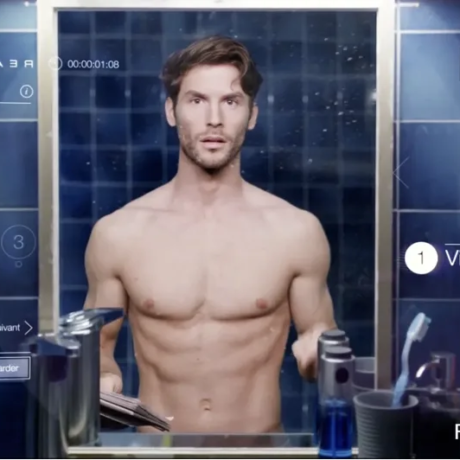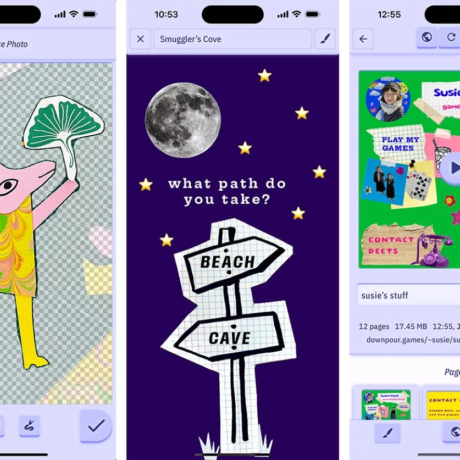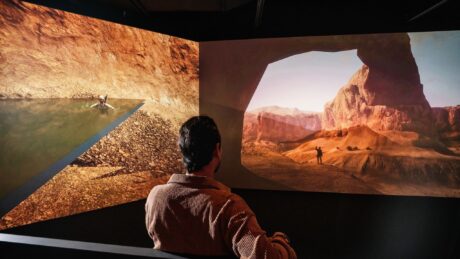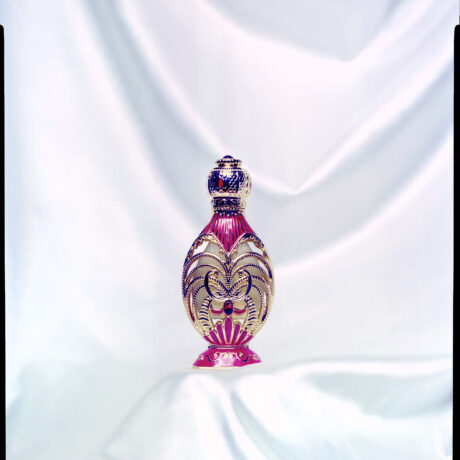In her column the ‘Culture at Home,’ Gabrielle de la Puente of ‘The White Pube’ explores the benefits and drawbacks of the world of artist-vlogging.

For the past few years I’ve been really enjoying a very specific subset of YouTube videos made by artists: the studio vlog. The videos I watch tend to feature artists working from stylish home-studios, usually surrounded by what Imogen West-Knights describes as the ‘pastel-scalloped-modernist look’ of mid-century millennial interior design: hardwood floors, colourful furniture, plants, bright decor, and well-curated plastic. Picture those basket organisers by HAY in the background. If the artists aren’t at home in New York, they’re stretching out in bright airy studios in the American midwest, or somewhere suburban in Singapore or the Netherlands. That’s our virtual setting.
In those settings, the artists film themselves at work. I like the overhead shots of cameras pointing down at clean desks, iPads and Apple Pencils, or over the calm skin of someone being tattooed. I like the over-shoulder shots too: cameras aimed at blank linen canvases, computer screens, and pottery wheels. Process shots often become timelapses paired with royalty-free music (lofi-beats or Bossa nova), or there’ll be narration about the creative choices on display. Some videos are dedicated entirely to sketchbook tours or to rearranging and tidying set-ups. The artist might do a run to a nearby shop for more materials: masking tape, Posca markers, fluffy paint brushes that tinkle when dropped in hand-made ceramic pots back at home. It’s always calm, always pleasant. Vlogs can last anywhere between ten and forty minutes-long and I usually watch them when I stop for lunch. I enjoy the company, enjoy living vicariously, enjoy body-doubling while I write or knit or think.
I found Radhia Rahman first, and then the algorithm brought me to everybody else. There’s Megan Wang, Jamie Green, Jasmine Chan, Alana Landrum, Carmen Veltman, Cheyenne Barton, Natasha Elle, and some artists who go by nicknames like Apple Cheeks, Uncomfy, JulianneDoodles and little tiny egg. They make matcha lattes in the mornings, they stroke their cats in the afternoons—because they always have cats. And it’s funny— the art might not always be to my taste, but the video style is. Subdued autumnal colour correction. A pace and a focus that makes it feel like we both have all the time in the world and, aren’t we lucky, because we get to give all that time to art. Every video has an easy Sunday morning feel to it. Uninterrupted creativity in protected comfort. I find that there is an innately reassuring quality to watching a video of somebody else making art. Instead of struggling to make it yourself, the video format suggests the artist will solve the problem before the clip comes to an end; that it’s already finished, settled, dried, fired, or whichever process fits, and therefore the viewer can relax.
I like relaxing. I need the culture I experience at home to trick me into it and so I have been grateful to these creators for a while. But lately, studio vlogs have stopped having the effect they once had on me. Maybe I, as an art critic, should never have sought refuge in this particular corner of genteel media in the first place. Because I’ve started questioning whether this is something artists should even be doing. I mean, artists can do whatever they want but I’m thinking about the culture at large. On the one hand, vlogs lift at least some of the lid on the private work of artists, illuminating an intricate profession that outsiders think can be a bit of a sit-off. On the other hand — the one cramping behind my back — being an artist is not an easy Sunday morning for most people. I can only speak for the British working class but not many people have the time, the physical space, the headspace to pull it off. Art-making is rushed in between quick breaths or it happens once in a blue moon (aka, on hard-won residencies). This is what I mean about living vicariously through the videos. Watching is a consolation prize, but I still appreciate prizes.
Studio vlogs create a beautiful image of what it means to be an artist, except it’s a beautiful image only possible because of all the extra labour of filming, editing and posting this content which gets stacked on top of the already-difficult work of making art. The people I know also don’t have the mid-century millennial backdrop to pull content creation off. And, listen, for all I know, making videos is an important part of these artists’ creative practices and it brings them unproblematic joy and a sense of community. All good things. But it’s bad enough that artists are stressed nowadays about steadily feeding Instagram in order to maintain relevance. The studio vlog takes that administration a step further. It reaffirms the anxiety that we cannot simply do a thing anymore, we have to also be documenting ourselves doing it. Patting our heads and rubbing our tummies whilst also pressing record on a camera with an invisible third arm. I worry about the unintended influencer-impact on the artists watching who don’t have YouTube channels, and who don’t want to. Although mostly I worry about the artists on camera and what it is doing to their relationship with art.
Now has felt like the right time to voice these proxy-worries because recent vlogs I’ve seen have included artists discussing burnout, creative block, anxiety, depression and isolation. There’s also been more of that classic ouroboros pitfall of YouTube content creation in artists filming themselves editing their own vlogs in order to pad out the videos, or because they’re doing just as much (if not more) editing than they are making art right now. I don’t know, but it’s there. How can you ever get into a flow state if you know you have to press play, stop to end the recording, change the angle, offload the memory card and so on? How can you develop work if the risks you need to take to achieve development are hindered by the self-conscious presence of the camera lens and future commenters? Artists should make art because they want to, not because they have to film themselves making it for a job. It’s just rough because I think being a YouTuber is what gives a lot of these people the financial freedom to be artists. The SkillShare and Squarespace sponsorships are ubiquitous; the business of being one of these artists is fascinating.
A lot of the studio vlogs I watch are made by people who sketch out cute designs for stickers and prints. They’re not dealing in the conceptual. They’re picking colours for plushies and negotiating with manufacturers through Alibaba. They make clay desk mates. Embroidered sock designs, printed t-shirts. Stuff that might be classed as artist merchandise before art because it is made to sell. Items are sold through the artist’s website and either posted out by the artist or fulfilled by third-party companies. Some videos are dedicated to packing shop orders, writing hundreds of hand-written thank you notes, and dropping off sacks at the post office — and I still watch. The vlogs mean YouTube becomes a funnel for followers who become customers. Some fans join the artists’ Patreon communities. Patreon can simply act as a tip jar but it can also give fans much more: Cheyenne Barton has a thousand paid members and offers access to a podcast, a Discord server, and monthly mail outs of limited edition stickers and postcards.
I think I will always be interested in the finances of artists because becoming a full-time artist can place somebody in a radical position in which they are liberated from typical capitalist procedures. I want that to be true here because it is very fulfilling and reassuring and freeing to be paid directly by your own audience. I should know. The White Pube is only nearing a decade because of my own Patreon account, and the support has been more meaningful than institutional funding, or rare exhibition and commissioning opportunities. I just hope that these artists feel free to make what they want, and that they haven’t hemmed themselves into any one way of being an artist as a result of sharing work online. They risk becoming tied to content creation trends; an algorithm that demands constant uploads; Patreon supporters and Youtube followers who come with their own demands, and who like the thing a creator is doing when they first encounter them and generally expect more of the same or they’re out. I also hope these artists feel free to make things with the cameras off. I hope the money they get from YouTube’s AdSense and their sponsorships allows them to buy studio time for themselves, in the same way any artist does off the back of a job that distracts from the main event. (Art.)
There seems to be a category of artists whose audience has only ever experienced their work through the interfaces of social media, or buying small tokens from their online shops, rather than experiencing artwork in person at an exhibition, or in writing by critics like me. For those of us who need to experience their culture at home because of disability, time, or money, I’m grateful for the virtual studio visits. Again, I just hope the internet helps liberate their art, rather than backing them into a corner. And I hope the easy Sundays are true for them, because it really looks like such a good life to get to live.
Words by Gabrielle de la Puente





